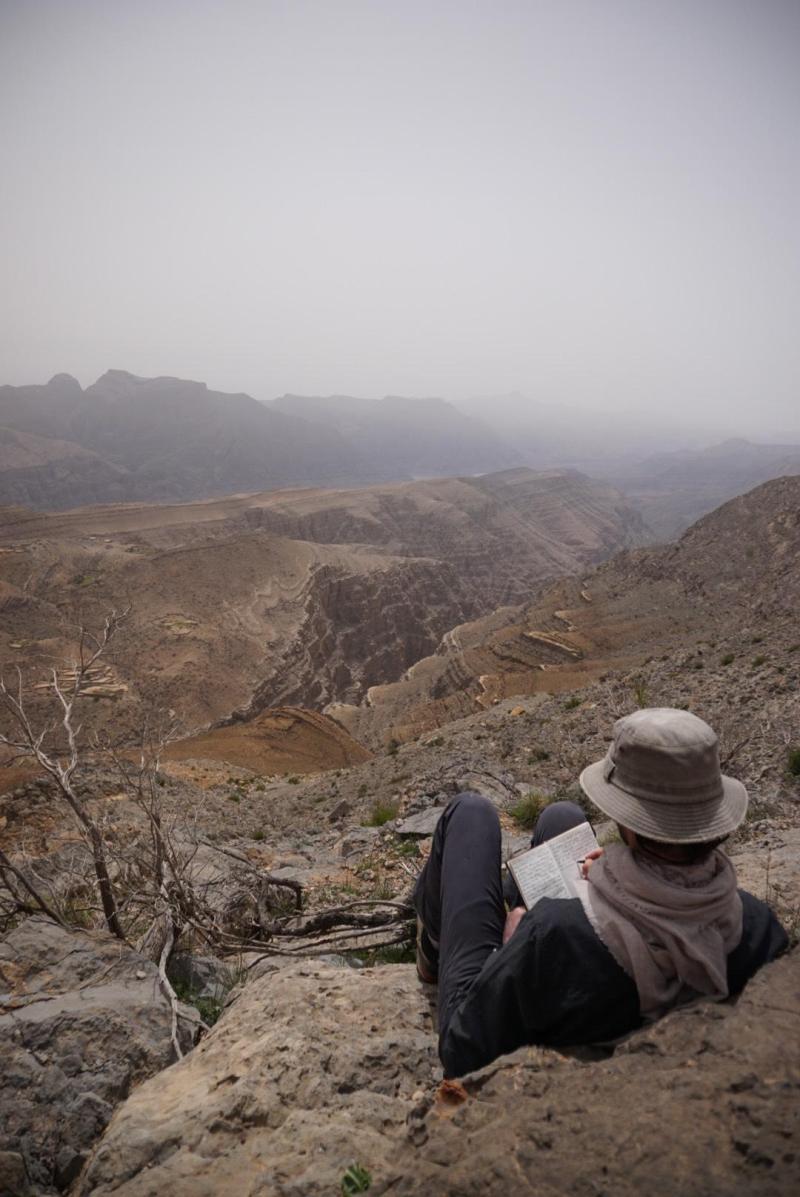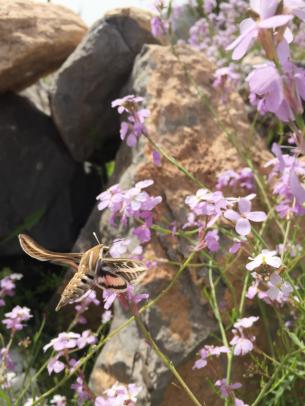Today we scoured the nooks and crannies of cliff faces in search of our 23 target plant species.
But from the very beginning, there was one species in particular that we really wanted to find. Nobody in our group had yet come across Salvia mirzayanii — a fleshy plant with whorls of thick leaves and purpley flowers. In Iran, it’s sometimes used in folk medicine. In Musandam, it’s only ever been recorded once, in a single location. On our ID sheets, the habitat information of Salvia mirzayanii just has one word next to it: “Unknown”.
Setting off up the mountainside, we searched the cracks under rocks and the shade of small trees for any sign of the species. We stumbled across many of our other study plants. For Rosularia adenotricha, we gathered seed samples to be propagated at the Oman Botanic Garden (OBG). We explored wadi beds and rocky slopes for Umbilicus horizontalis, a small succulent that seems to thrive in shaded rock cracks (out of reach of nibbling goats). And we noted some of the traditional uses of Musandam’s flora, from flowerheads simmered in milk to make a grainy pudding, to grasses used to treat skin burns.


But it wasn’t until after lunch that we finally discovered the protagonist in our purple flowered quest. Andrew and Saif were scouting a steep slope of loose rock near a military base when they spotted it: several clusters of the plant, dotted along the mountainside. Saif noticed a hawkmoth pollinating the flowers. We marked the location of the species on the GPS. In April, when it seeds, Saif will return to collect some specimens so that the rare Musandam plant can be grown in the nurseries of OBG.
The rest of the afternoon we spent exploring the plants that burst into colour inside terraces. Once a common feature in Musandam – where locals would cultivate date palms and wheat – many terraces have now been abandoned. But walled off from grazing livestock and fed by rains and still-functioning irrigation systems, some of these farms now act as oases for plant life.
As we dug up bulbs and photographed pollinators, we marvelled at the fact that here, slap bang in the middle of one of the most arid environments on Earth, we were standing in a meadow.


This blog post was originally published on the Oman Botanic Expedition 2019 website. If you’re interested in reading more articles about our short expedition in Musandam, take a look.




